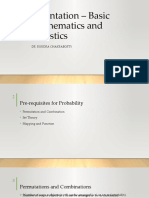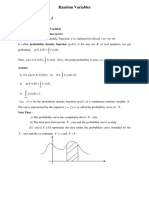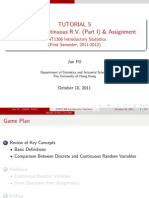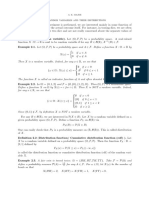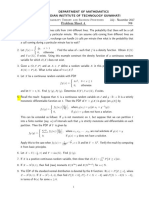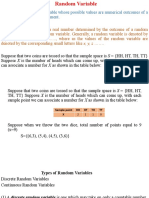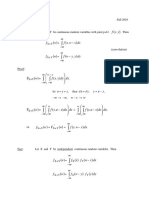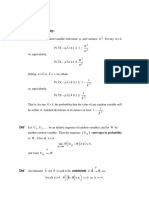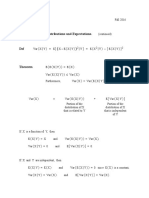0% found this document useful (0 votes)
47 views6 pagesFunctions of Random Variable PDF
1. This document discusses different methods for finding the probability distribution of Y when Y is a function of a continuous random variable X. These methods include using the cumulative distribution function (CDF), moment-generating function (MGF), and change-of-variable technique.
2. Several examples are provided to illustrate how to apply these methods to find the distributions of Y for specific functions of X with given distributions, such as Y = 1/X^2 when X is uniform and Y = -2θln(X) when X has a particular power distribution.
3. Useful facts provided include that if U is uniform and X = F^-1(U) for a CDF F, then X has CDF F
Uploaded by
dCopyright
© © All Rights Reserved
We take content rights seriously. If you suspect this is your content, claim it here.
Available Formats
Download as PDF, TXT or read online on Scribd
0% found this document useful (0 votes)
47 views6 pagesFunctions of Random Variable PDF
1. This document discusses different methods for finding the probability distribution of Y when Y is a function of a continuous random variable X. These methods include using the cumulative distribution function (CDF), moment-generating function (MGF), and change-of-variable technique.
2. Several examples are provided to illustrate how to apply these methods to find the distributions of Y for specific functions of X with given distributions, such as Y = 1/X^2 when X is uniform and Y = -2θln(X) when X has a particular power distribution.
3. Useful facts provided include that if U is uniform and X = F^-1(U) for a CDF F, then X has CDF F
Uploaded by
dCopyright
© © All Rights Reserved
We take content rights seriously. If you suspect this is your content, claim it here.
Available Formats
Download as PDF, TXT or read online on Scribd
/ 6















